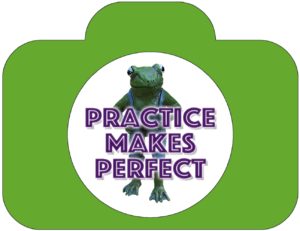 Hello, and welcome to this week’s Practice Makes Perfect (PMP) second reveal. The theme selected for this week was Ground, Texture.
Hello, and welcome to this week’s Practice Makes Perfect (PMP) second reveal. The theme selected for this week was Ground, Texture.
I’m really looking forward to seeing how other participants interpreted the “assignment.”
I enjoy challenges like this because participants can choose how they want to play. Does one go the simple, seemingly obvious route and take pictures of texture on the ground? Or does one think a bit and get creative?
I did a little bit of both.
Textures on the Ground
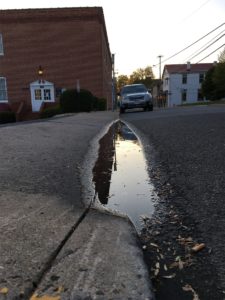
I see this puddle on the ground often. It is along one of the regular routes Belle and I walk through town. Like other puddles, it isn’t always there. It varies in size, too. Sometimes there are ripples (from wind) and sometimes there are rocks or other stuff in the puddle. Every now and then, I see a bird or two using it as a birdbath. Depending on the time of day, sometimes the colors are far more dramatic.
Recently, I have been giving more thought to differences between people. Not just physical differences, but things like how people see and think about things. The differences are amazing. Understanding those differences explains a lot in terms of how we communicate with each other, how we interact, why we do the things we do, how people react and why.
Hubby and I often “argue” about colors. Not the colors themselves, but the name for a particular color. There’s a building here in town that I say is purple, but he insists is brown. The more I think about that, the more I realize he and I might actually see the color differently.
That got me thinking about reflections. Reflections often catch my eye. When I am with others, it’s usually me who either notices a reflection first or is the first person to say, “Oooh, look at the cool reflection.” Is that because I just like reflections more than other people? Because I am a more-visual person? Or because others don’t see reflections until someone else points them out? What are reflections, really? Optical illusions (simple explanation backed by science) or windows into an alternate reality (complex and kinda crazy explanation)?
I don’t know. All I do know is that reflections intrigue me. That reflection is particularly interesting to me because there’s the lighter sidewalk on the left, with it’s kind of smooth texture, and the darker, bumpier asphalt on the right, with the smooth-as-glass reflection in the middle. The reflection itself changes depending on the viewer’s perspective. (I’m thinking we may need to use reflections as a future theme.)
Foreground Texture Adds Depth to Images
I’m a sucker for beautiful sunrises/sunsets, blue skies, and interesting clouds. My clearest, big sky, west-facing view around town is from a parking lot that just happens to overlook the county jail.
Here’s a nice sunset photo, captured with my phone. I have an older iPhone 6S. It doesn’t capture sunsets nearly as well as my point and shoot camera or as well as newer models of the iPhone. But it does okay.
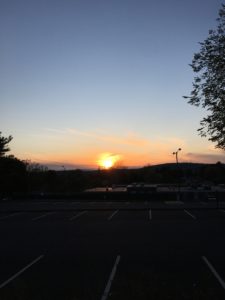
The sunset I captured was just nice, in my mind. Sunsets are far more interesting to me when there are more clouds in the sky. How does one make that photo better? I cannot manufacture clouds, but I can incorporate some interesting foreground textures.
The next image is captured from about the same spot. I didn’t move my feet, I just squatted down. It changes the image dramatically, right?
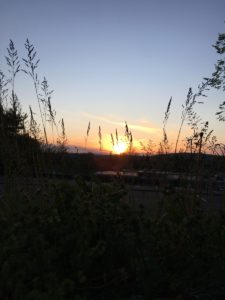
I shot that image from atop a hill and the grasses and weeds are pretty tall. Squatting was all it took to add foreground to that shot. Sometimes, you have to work harder to add foreground texture. Take this tree as example #1.
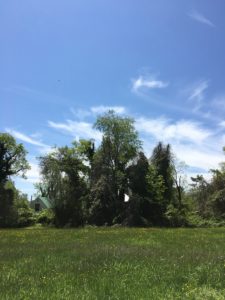
The clouds caught my eye first. I thought the trees made for an interesting subject to demonstrate my next point. Squatting wasn’t enough in that case. Because the ground was flatter, the only way I could incorporate the grass in my foreground was to get pretty low to the ground.
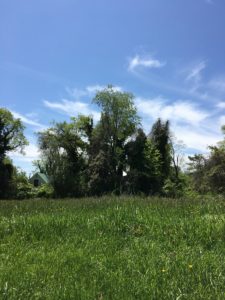
Example #2 makes for a much more interesting image, right? Relative to the first one. By itself, however, that image still isn’t great.
I moved a step or two to the right, stooped WAY down again, and captured the next image, example #3.
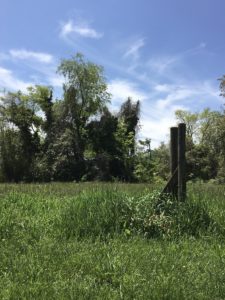
Crazy how much that changes the image, right?
I probably looked like an idiot to passersby, if there were any, but the end result was worth it. In my opinion.
Here’s another version, which is example #4.
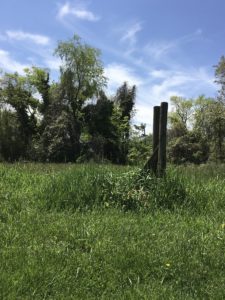
The last image includes more grass in the foreground. Which version of the tree images do you like best? I like example #3, personally.
Subjects on the Ground
What about when your subject is closer, and on the ground. Like these cute Buttercups?
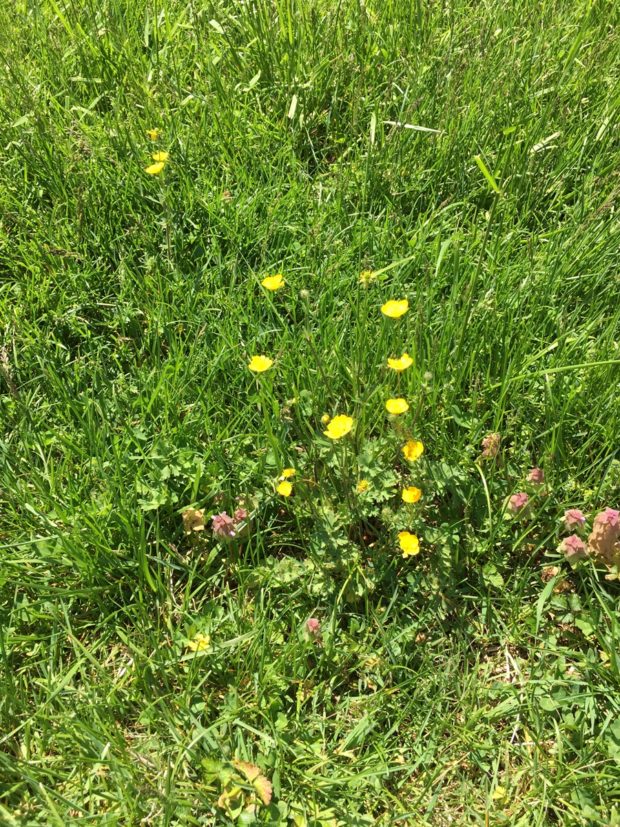
Getting close isn’t always the final answer. Anyone can zoom in to capture a close-up photo of flowers. (Pretend that shot is actually in focus.)
How do you make a more-interesting flower photo? Get on the ground.
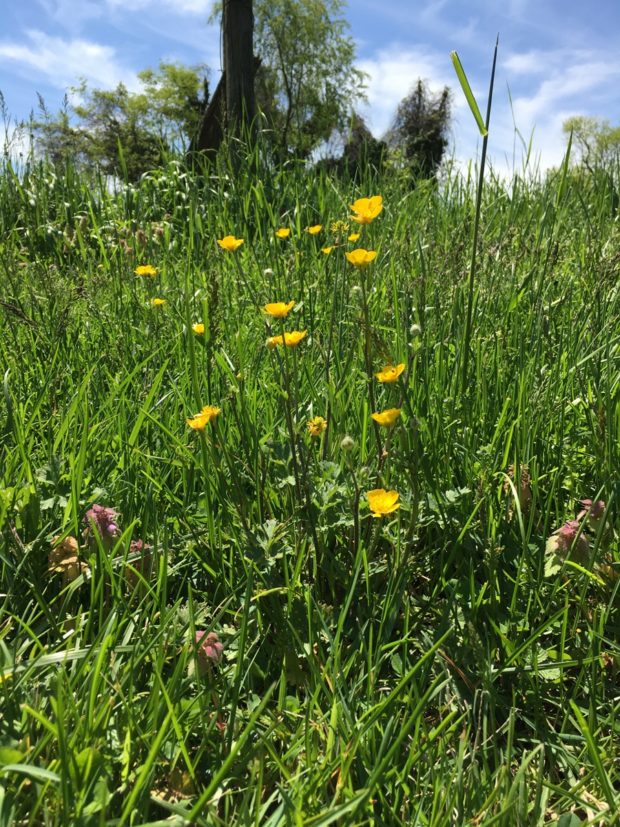
That’s a really dramatic example of the different effect you can achieve just by changing your shooting perspective. My camera was pretty much in the grass at that point, but it’s worth it. I think the second shot, version 2, is FAR more interesting than version 1
Here’s a slightly different image.
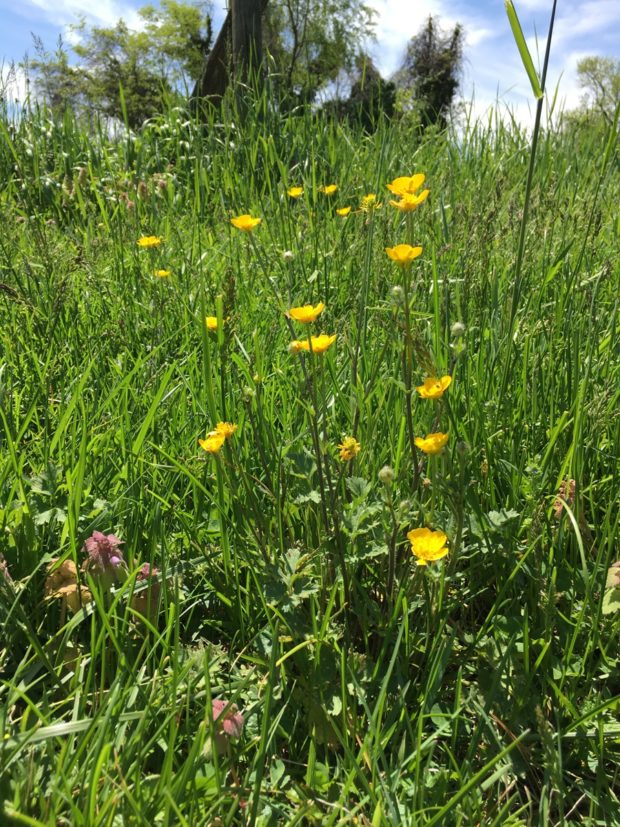
Perspective matters. 🙂
Theme for Next Week
I think we should focus on light next week. How? By shooting the same subject in the same, exact spot on different days and at different times. For this challenge, you have to stay indoors.
PMP3: Same Spot, Different Day & Time
Thanks for playing along!
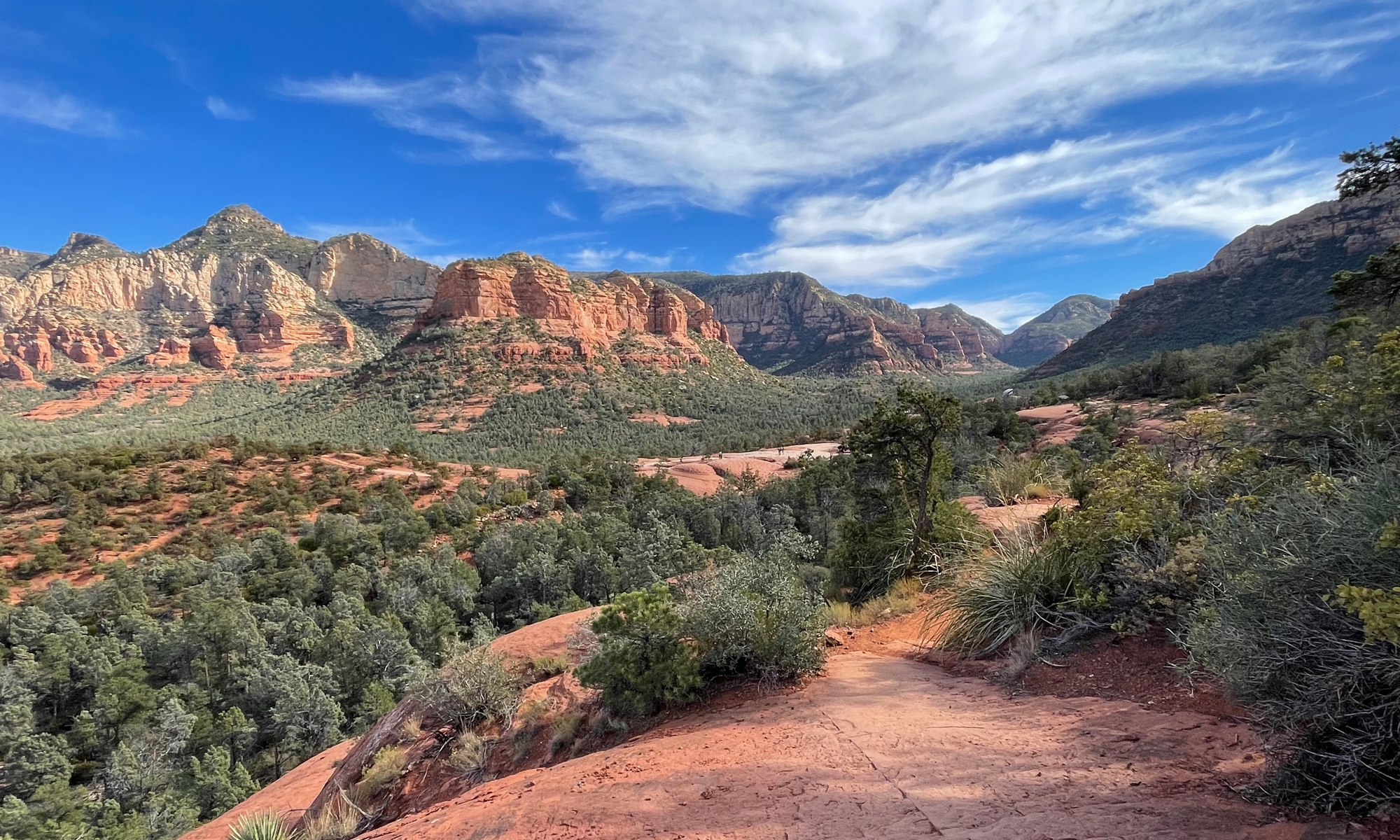
Grassy foreground #3 and buttercups #2 are awesome! I used a similar “get down in it” approach for my pics this week too.
Next week’s challenge will be fun!
Thanks, Shan. I’ve enjoyed getting a bit creative with images again.
Ok, I agree, people definitely see colors differently, the reflection is positively a Portal to another reality, sunset with texture, tree #2, and buttercups from the ground! 😁
And here’s the link to my contribution to PMP 2:
https://www.instagram.com/p/B_vdbLlA9erwaYPZJrmSArGNQ_6MKl_VWTTYYs0/?igshid=ju05enfvy5bn
This is already fun, but next week will be really fun since “indoors” is 400 square feet! LOL
Lynne, you could probably participate from the same seat. 🙂